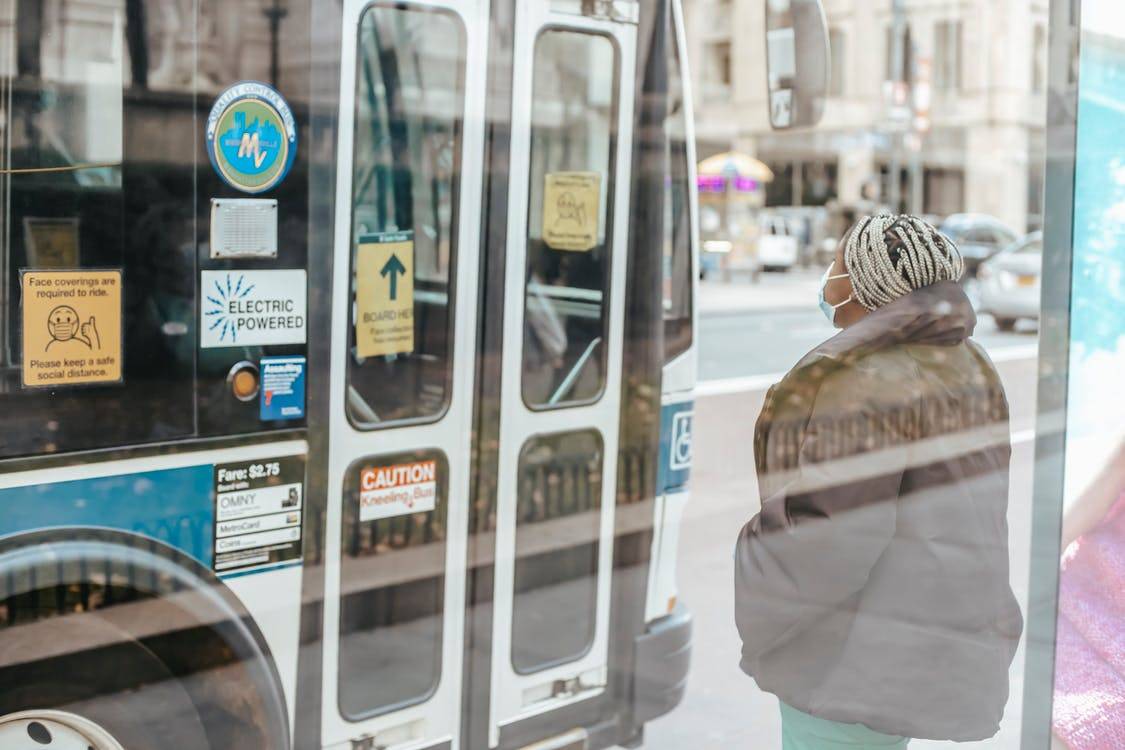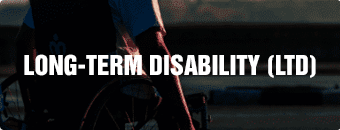- Our Firm
- Personal Injury
-
-
-
Personal Injury Lawyers
-
-
-
-
-
-
Injured in an accident? At Diamond & Diamond, our team of lawyers rely on their reputation in the field and extensive experience in personal injury to provide clients with a dedicated support system over the duration of their case.
-
-
-
-
-
HAVE YOU RECENTLY BEEN INJURED IN AN ACCIDENT?
-
-
-
- Real Estate
- Corporate
- Class Action

Civil Claims and Public Transit
Taking public transit is the practical option for many people in Canada, especially in busy cities in Ontario. Generally, public transit accidents are rare, but they could be life-altering when they happen. Passenger vehicles, such as buses and streetcars, carry a lot of weight, so when an accident happens, it can often lead to catastrophic injuries.
However, whether you’ll be successful in a civil claim against public transit authorities will depend on the circumstances. Therefore, if you sustain public transport injuries, you should consult with a Diamond & Diamond personal injury lawyer to explore your options.
Overview of Public Transit in Ontario
How common are public transit accidents in Ontario? They’re not at all common. Before the pandemic, residents of Ontario and Quebec took about 150 million trips a month. As of November 2021, that number fell to 56.8 million. By contrast, the Ministry of Transportation reported 354 bus accidents for all of 2020. The Transportation Safety Board of Canada recorded 965 railway accidents for the same period, of which only 42 were passenger trains.
The low incidence of public transit accidents is laudable and a testament to reliable public transportation in Ontario. Nevertheless, for the people that suffered personal injuries in an accident, it’s one accident too many.
Types of Injuries Caused by Public Transit
Public transit systems work differently. A bus, for example, is not the same as a streetcar or a train. But when it comes to injuries, they all have a high risk of causing serious or even catastrophic injuries. The reasons are that they are large and heavy and often travel at high speeds. When you are involved in a public transit accident, you may sustain the following injuries:
Head injuries
You can sustain all types of head injuries from sudden starts or stops that cause you to fall and hit your head or come into contact with a hard object. Even if you do not come into contact with anything, whiplash is always a danger, resulting in traumatic brain injury. Head injuries may also result from being hit by a public transit vehicle or from falling while getting on or off a bus, streetcar, or train.
Spinal cord injuries
Important things to consider in public transit accidents are the head and spine. The same type of trauma that can cause head injuries may affect your spine. Sudden acceleration and deceleration can cause severe harm to your spinal cord, causing temporary or permanent loss of motor control or even paralysis.
Fractures
Whether you’re the driver, a passenger or a pedestrian, there’s a high risk of breaking your bones if you’re involved in any vehicular accident. Public transit accidents are no different, except perhaps you are more at risk because you will not be wearing a seatbelt or may even be standing up. This increases the potential for fractures.
Soft tissue injury and burns
Many victims of public transit accidents sustain relatively minor injuries, such as skin abrasions, cuts, and burns.
Duties and Liabilities of Public Transit Companies In Canada
Operators of public transit systems in Canada owe a duty of care to their passengers. They must ensure that the vehicles are roadworthy and that drivers have the training and competence to operate the vehicles. Failing in this duty can lead to severe consequences. So, who is liable for personal injuries sustained in a public transit accident? That depends on the circumstances.
A government-run bus or subway train accident may point to municipal liability. If the accident occurs in a privately-owned bus or train that is under contract with the municipality, the private company and the local government may both be liable. Moreover, one doesn’t necessarily have to be in the vehicle to sustain injuries, as a person could be injured while embarking on, or disembarking from, a bus or train.
Another complication is the involvement (or lack of) of another party. For example, if a bus hits a private car, the insurance companies may also become involved as Statutory Accident Benefits (SABS) would kick in.
On the other hand, passengers injured in a public transit accident that does not involve a collision with another vehicle or an object may not be eligible for SABS as per the exception in Section 268 of Ontario’s Insurance Act. One example is when a bus hits a pedestrian.
However, under Section 267.5, the owner or driver of a public transit vehicle has no liability protection in such cases. Thus, they may be held liable and face civil claims.
Civil Claims for Personal Injury in Public Transit
Ontario laws that apply to motor vehicle accidents seek to minimize civil claims. The at-fault driver typically has certain protections in a personal injury claim. One such protection is that the claimant must meet the legal threshold of permanent impairment or disfigurement to get compensation for general (non-pecuniary) damages, such as pain and suffering.
Another hurdle is that the claimant must prove that the general damages exceed that of the statutory deductible for automobile accidents, which, in 2022, is $41,503.50. In other words, if the claimant cannot prove this, they do not get compensation for non-pecuniary damages.
However, these protections do not apply to debilitating injuries. The extent of your injuries and the accompanying pain and suffering will determine the amount of compensation the liable parties in public transit civil claims must pay.
Contact Diamond Law Personal Injury Lawyers
When you use public transportation, you have a right to expect that you will reach your destination safely and in one piece. If the ones in control fail in their duty of care to passengers and other people, bad things can happen.
But civil claims and public transit personal injuries are complicated issues. Depending on the circumstances, several parties may be liable for public transport injuries. Suppose you or a family member suffer catastrophic impairment or serious injuries as a result of public transit accident in Ontario. In that case, you should immediately consult with Diamond & Diamond personal injury lawyers.
We have a team of lawyers with broad experience dealing with all types of complicated cases and medical experts to provide the necessary documentation to prove your claim. We also pride ourselves on treating each of our clients with the professionalism and compassion they deserve. Diamond & Diamond Lawyers are also skilled at settling claims in the best interests of their clients.
Contact us online to receive a free evaluation of your case. You can also call 1-800-567-HURT to talk to one of our personal injury lawyers. Once we get the details of the case, we can advise you on the best strategy to file public transit civil claims.
Pro Tip
Before worrying about accident benefits or tort claims when injured in a public transit accident, please worry first about your safety. Be careful when crossing the road and hold tight to the railings provided within buses.
Civil Claims for Personal Injury in Public Transit
Ontario laws that apply to motor vehicle accidents seek to minimize civil claims. The at-fault driver typically has certain protections in a personal injury claim. One such protection is that the claimant must meet the legal threshold of permanent impairment or disfigurement to get compensation for general (non-pecuniary) damages, such as pain and suffering.
Another hurdle is that the claimant must prove that the general damages exceed that of the statutory deductible for automobile accidents, which, in 2022, is $41,503.50. In other words, if the claimant cannot prove this, they do not get compensation for non-pecuniary damages.
However, these protections do not apply to debilitating injuries. The extent of your injuries and the accompanying pain and suffering will determine the amount of compensation the liable parties in public transit civil claims must pay.
Contact Diamond Law Personal Injury Lawyers
When you use public transportation, you have a right to expect that you will reach your destination safely and in one piece. If the ones in control fail in their duty of care to passengers and other people, bad things can happen.
But civil claims and public transit personal injuries are complicated issues. Depending on the circumstances, several parties may be liable for public transport injuries. Suppose you or a family member suffer catastrophic impairment or serious injuries as a result of public transit accident in Ontario. In that case, you should immediately consult with Diamond & Diamond personal injury lawyers.
We have a team of lawyers with broad experience dealing with all types of complicated cases and medical experts to provide the necessary documentation to prove your claim. We also pride ourselves on treating each of our clients with the professionalism and compassion they deserve. Diamond & Diamond Lawyers are also skilled at settling claims in the best interests of their clients.
Contact us online to receive a free evaluation of your case. You can also call 1-800-567-HURT to talk to one of our personal injury lawyers. Once we get the details of the case, we can advise you on the best strategy to file public transit civil claims.
Need a Lawyer?
We are here 24/7 to address your case. You can speak with a lawyer to request a consultation.
1-800-567-HURTGet started with a free consultation
OUR TEAM
- Bilal Hashimy
- Qaisar Yaqub
- Shir Zisckind
- Gray Sinden
- Shelly Bard
- Christian Brown
- Daly Canie
- Mohsen Heydari
- Tanveer Sohal
- Erin MacDonald
- Prianka Virdi
- Noah Brownstone
- Justin Kaminker
- Harinder S. Bhatti
- Craig Yargeau
- Kiran Birk
- Amit Singh
- Andrei Teju
- Maria Zahid
- Matthew Douglas
- Jacob Elyk
- Harry Gill
- Aria Nejatali
- Jesse Singh
- Joel McLeish
- Kristina Olivo
- Egi Bano
- Ainsa Hepburn
- Cam Woolley
- Charles Thompson
- Alexandra McCallum
- John Sime
- Allan Cocunato
- Patrick Poupore
- Erika Henderson
- Marina Korshunova
- Brandon Handelman
- Regeena Alapat
- Ryna Kim
- Natalia Poliakova
- Isaac Zisckind
- Manpreet Bhogal
- Mathura Santhirasegaram
- Nikolai Singh
- Sandra Zisckind
- Jeremy Diamond
- Michael Blois
- Darryl Singer
- Nadia Condotta
- Tinashe Madzingo
- Megan Armstrong
- Veronica D’Angelo
- Corey J. Sax
- Zev Bergman
- Scott Tottle
- Steven Wilder
- TJ Gogna
- Jillian Carrington
- Joshua Himel
- Simon Diamond
- Cory Rubin
- Simon Mariani
- Brandon Greenwood
- Basil Bansal
- Nastassia Ivanova
- Tania Fleming
- George Laloshi
- Patrycja Majchrowicz
- Diana Iakossavas
- Dior Africa
- Alex Ragozzino
- Liana Saccucci
- Richard J. Chang
Civil Claims and Public Transit FAQs
How can you get fair compensation for your injury in public transit in Canada?
Seeking compensation for serious or catastrophic public transit injuries is a complex undertaking in Canada. Consult with a reputable personal injury law firm to ensure you get the compensation you deserve in a public transit accident.
What are statutory accident benefits, and how do they relate to public transit accidents?
Statutory accident benefits (SABS) are various financial assistance extended to insured persons involved in motor vehicle accidents. Auto insurance companies pay these benefits as mandated under the Insurance Act. When a public transit accident results from a collision with another vehicle or object, injured persons may file a claim for SABS with the driver’s insurance company.
What are the special tort rules that apply to public transit accidents?
The Insurance Act stipulates that public transit drivers and owners may be liable for injuries resulting from an accident that does not involve a collision with another vehicle or object. The non-pecuniary damages for civil claims involving a public transit vehicle are not subject to the permanent impairment or disfigurement threshold and statutory deductibles typically required for motor vehicle accident claims.
NEED A LAWYER? CONTACT OUR TEAM TODAY
Chat Now
OR CALL NOW FOR A FREE CONSULTATION
 1-888-INFO-LAW
1-888-INFO-LAW
Diamond & Diamond British Columbia Head Office
1727 West Broadway, Suite 400, Vancouver, British Columbia
Barrie
Main Office
168 Bayfield Street
Calgary
Main Office
1331 Macleod Trail SE, Suite 645
Edmonton
Head Office
4246 97 Street NW, Unit 103
Halifax
Consultation Office
1701 Hollis St
London
Main Office
256 Pall Mall St, Suite 102
Oshawa
Consultation Office
50 Richmond Street E, Unit # 108 B
Ottawa
Main Office
955 Green Valley Crescent, Unit 315
Sudbury
Main Office
31 Larch Street, Unit 300
Surrey
Main Office
1104 – 13737 96 Ave, Surrey, BC V3V 0C6
Toronto
Head Office
255 Consumers Road, 5th Floor
Toronto
Consultation Office
1678 Bloor Street, Suite 302
Vancouver
Head Office
1727 West Broadway, Suite 400
Windsor
Main Office
13158 Tecumseh Rd. E. Unit 3B
Additional Areas Served
- Ajax
- Alberta
- Aurora
- Barrie
- Belleville
- Brampton
- Brantford
- Brockville
- Burlington
- Burnaby
- Calgary
- Chatham
- Collingwood
- Durham
- Edmonton
- Etobicoke
- Hamilton
- Kelowna
- Kingston
- Kitchener
- Leamington
- London
- Markham
- Milton
- Mississauga
- Muskoka
- Newmarket
- North York
- Oakville
- Orangeville
- Orillia
- Oshawa
- Ottawa
- Owen Sound
- Parry Sound
- Perth
- Peterborough
- Pickering
- Prince Edward County
- Richmond
- Richmond Hill
- Sault Ste Marie
- Sarnia
- Scarborough
- St. Catharines
- Stouffville
- Sudbury
- Surrey
- Thunder Bay
- Timmins
- Toronto
- Uxbridge
- Vancouver
- Waterloo
- Windsor
- Whitby
- Woodstock
- Wallaceburg
© 2021 Diamond and Diamond Lawyers LLP. All Rights Reserved.













